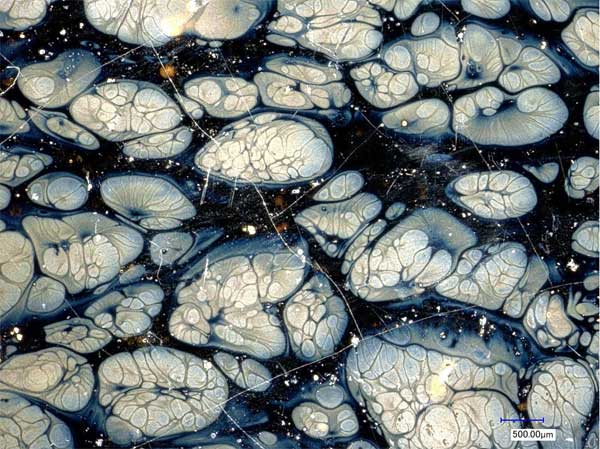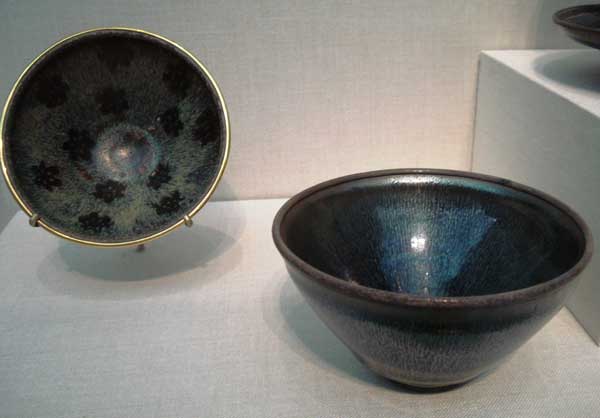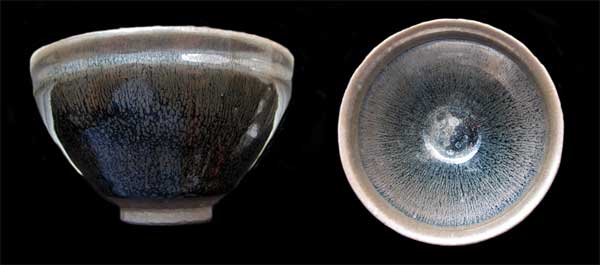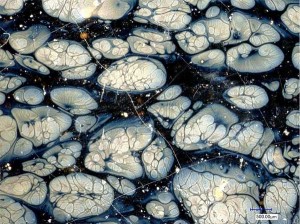
 Do ancient Chinese ceramics hold the key to better synthesis of a rare iron oxide? New analysis of Jian bowls, pictured above, indicate yes. Credit: Wikimedia Commons
Do ancient Chinese ceramics hold the key to better synthesis of a rare iron oxide? New analysis of Jian bowls, pictured above, indicate yes. Credit: Wikimedia Commons
Art and science—seemingly so separate—are actually incredibly intertwined.
(I need not tell this to members of ACerS Art, Archaeology, and Conservation Science (AACS) Division, who assemble at the intersection of cutting-edge materials research and the investigation of ancient ceramics. Click here to read more about how a new collaboration between AACS and Potters Council, a subsidiary of ACerS, is providing potters greater exposure to the connections between art and science.)
Ceramics, for example, might have begun as an art, but science made art applicable. Likewise, art makes science relevant for those outside the lab.
The lines between art and science are further blurred by the work of an international team of researchers who believe a rare iron oxide found in ancient Chinese pottery could be critical in developing improved and inexpensive magnets for electronics.
Epsilon-phase iron oxide (ε-Fe2O3), first identified in 1934, was only fully characterized within the last 10 years. And despite modern technology, creating the rare compound has proved challenging.
But the team, which includes several Lawrence Berkeley National Laboratory scientists, is helping to meet that challenge through the study of coveted Chinese pottery fashioned more than a thousand years ago.
Produced during the Song dynasty (960–1279 AD) in southeast China’s Fujian Province, Jian blackwares, particularly the tea bowls, are highly prized pieces of pottery.
A combination of iron-rich clay, limestone, and wooden ash, the pieces, also known by their Japanese name Tenmoku (“temmoku” or “temoku”), were fired, thousands at a time, at extremely high temperatures (2,400 degrees Fahrenheit, 1,300 degrees Celsius) in massive Jianyang kilns.
Jian wares, characterized by their famous black glaze, are equally well known for their brown (“oil spot”) and silver (“hare’s fur”) surface patterns. It was previously believed that the former contained only the mineral hematite (Fe2O3) and the latter crystallized from magnetite (Fe3O4).
Scientists analyzed the patterns using optical microscopy, electron microscopy, Raman spectroscopy, and synchrotron x-ray techniques. In studying the chemical composition and crystalline structure of the Jian glaze, they identified a small amount of highly metastable epsilon-phase iron oxide mixed with hematite in the hare’s fur patterns and a much larger presence with the magnetite in the oil spots.
According to a Berkeley news article, the discovery “could lead to an easier, more reliable synthesis of epsilon-phase iron oxide, enabling better, cheaper magnetic materials including those used for data storage.”
“What is amazing is that the ‘perfect synthesis conditions’ for epsilon-phase iron oxide were encountered 1,000 years ago by Chinese potters,” says lead author Catherine Dejoie.
Adds co-author Philippe Sciau, “As we learn more about this epsilon phase, we got the feeling that we just stumbled upon something much unexpected and potentially very important to our modern world.”
Though difficult to synthesize, the epsilon phase, which is not only non-toxic and resistant to corrosion, is also marked by “extremely persistent magnetization,” making it ideal for applications in electronics. The key to better synthesis, says the team, may lie in the pure epsilon phase exhibited in the oil spots.
“The next step will be to understand how it is possible to reproduce the quality of epsilon-phase iron oxide with modern technology,” says Dejoie. “And to identify and extract synthesis conditions and other factors to obtain large crystals of pure epsilon phase.”
The paper, published in Scientific Reports, is “Learning from the past: Rare ε-Fe2O3 in the ancient black-glazed Jian (Tenmoku) wares” (DOI:10.1038/srep04941).


